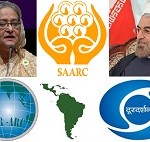India starts 2014 on a note of promise. Internal political transformations are taking shape, and this can only have a beneficial impact on our economy – and on our foreign policy.
Gateway House presents India’s foreign policy priorities for 2014 – ideas and issues that must be attended to, urgently, this year, and initiatives taken for our future interests.
Our primary focus should be on our South Asian neighbourhood – particularly on the instability emanating from the violence in Bangladesh and Afghanistan. We, along with a number of our SAARC neighbours, will see new leadership emerge; India’s attention must stay on these new players, internal and external. We must also be seen as a credible leader in multilateral fora, be it in the Indian Ocean Rim, SAARC or BRICS. All this must be performed within our capabilities but without compromising on pressing domestic issues such as poverty alleviation or reviving economic growth.
SAARC

Every SAARC country will have had national elections by 2014 – except Sri Lanka. It is a new democratic start for the region, and an opportunity for India to accomplish the following this year:
Bangladesh
1. New Delhi must ratify the Land Boundary Agreement – for India’s own security – which will decriminalise the border, cut down smuggling and human trafficking, legalise the inflow of daily workers into India (through work permits), abate terrorism and put an end to the people living in limbo for the last 40 years in the enclaves and the adverse possessions of over 3,000 acres of land that have to be exchanged.
2. Anticipate an increase in terrorist activities after the Bangladeshi national elections. It will be state-tolerated if the BNP-aligned political formations are dominant, and if the incumbent Awami League goes ahead with elections (boycotted by the opposition), more violence will surely follow. We must support going ahead with constitutionally-mandated elections so as not to interrupt the strengthening of the democratic process in Bangladesh whilst acknowledging strongly that the Awami League is a secular party which India would prefer to see winning the election.
3. Sign the Teesta Waters Agreement – to build the policy base for water-sharing agreements in South Asia, and as a precursor for India-Bangladesh-Nepal and Bhutan jointly demanding a discussion on water-sharing with China.
Sri Lanka
1. The Indian Prime Minister must visit Sri Lanka at the earliest opportunity, probably after our own national election so he can resume a more normal relationship with credibility.
2. Revive the process for the conclusion of the Comprehensive Economic Cooperation Agreement (CECA) which will bring in bilateral exchange of investment and services – expanding exchanges beyond tariff reductions for trade in commodities.
Pakistan
New Delhi must anticipate increased terrorist activity as the U.S. military drawdown from Afghanistan approaches. To counter this India must:
• Improve surveillance and interdiction capability on the India-Pakistan border, as also against Pakistani terrorists trying to infiltrate the India-Bangladesh and India-Nepal borders.
• Accelerate psychological warfare to counter Pakistan’s attempts to subvert Afghan political stability or its economy to the detriment of Afghan and Indian interests.
Afghanistan
1. Step up military training and assistance to Afghan Army and Police in consultation with the U.S. and Afghanistan’s regional stakeholders.
2. Incentivise Indian business, both private and public sector, to invest substantially in Afghanistan through
• Increased loan and grant assistance from Exim Bank
• Increased aid programmes that specifically target women’s education and entrepreneurship, especially investing in the development of artisanal skills for livelihood and export
• Indian investors should form syndicates with Japanese, Korean, Taiwanese, Chinese and U.S. companies for investment in Afghanistan
North East/Myanmar
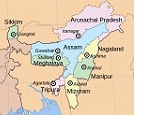
1. Build the Seven Sisters’ Corridor to speed up connectivity and development in our North East and develop linkages with Myanmar; use Thailand and Japan as infrastructure and business partners
2. Develop border trading posts on the India-Myanmar border, formalising the large informal trade
3. Bid for infrastructure projects in Myanmar jointly with Japan and the U.S.
Finance

1. Expedite a quantitative increase in Exim Bank’s book size – a bold move that will encourage Indian investment overseas, especially in Myanmar and Afghanistan.
2. Strengthen Ministry of External Affairs by increasing its budget, expanding recruitment, broadening its economic agenda and introducing lateral entry for specific expertise in international law, environmental and human rights.
Soft power
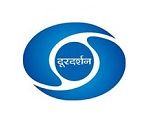
Use Doordarshan as a tool and asset of Indian foreign policy by:
1. Giving Doordarshan autonomy from Prasar Bharti
2. Taking Doordarshan global by launching an international channel to compete with CCTV9, Al Jazeera, BBC, and establishing bureaus in 17 capitals and financial centres around the world, to project India’s unique qualities and soft power.
P-5

The U.S.
Re-build and energise bilateral through technology and innovation linkages. Develop an India-U.S. Technology Agenda, involving the private sectors of both countries, resolving visa issues and promoting, inter alia, technology transfers vs. the current licensing model.
China
1. Ease restrictions on Chinese companies to build infrastructure in India as a reciprocal measure to China opening itself to greater Indian exports – starting with pharmaceuticals – for a more balanced and sustainable trade relationship
2. Encourage more cultural exchanges with China, with a focus on languages.
Russia
Revive and nurture the strategic relationship
• in the context of Afghanistan, Iran, China
• increase economic content beyond defence, space and nuclear
Iran
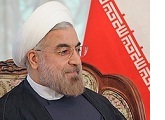
India’s source of energy, and access to Afghanistan and Central Asia. Tehran’s own strategic space and partnership with New Delhi has expanded thanks to the P5+Germany and Iran agreement of November 2013 on Iran’s nuclear programme. India can now:
• Energetically upgrade the Chahbahar port, as also the road connecting to the Zaranj-Delaram highway (with its connectivity potential to Central Asia).
• Increase import of gas from Qatar, Iran and other Gulf countries from the current 13.4 million metric tonnes, build LNG terminals at Indian locations beyond Hazira and Dahej at Gujarat.
Latin America

1. Start negotiations for FTAs with Mexico, Colombia and Peru. The three nations account for $10.5 billion in trade with India. But India’s exports are just $5 billion, are disadvantaged in tariff compared with the 50 countries that already have FTAs with the Latin trio.
2. Become a member of Inter-American Development Bank (IDB). The IDB disburses over $11 billion annually for development projects in Latin America – contracts open only for member countries, which puts India at a disadvantage to the West, Latin America, and Asian members such as China, Korea and Japan. 2014 offers a window to purchase shares, available this year due to the break-up of countries in Europe.
Indian Ocean
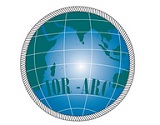
The zone of contestation, in which the U.S. is the global power and India the preeminent regional power, is seeing newcomers. New Delhi must:
• Collaborate with the U.S. and major Asian powers like Japan and Australia, in order to secure our own energy flows from the Gulf and Iran, and further strengthen the principles of Freedom of Navigation in international waters.
• Demonstrate greater leadership in the Indian Ocean, which opens up opportunities for experienced and skilled Indian expatriate workers gradually finding West Asia saturated, and leaving for East Africa which is rich in new oil finds.
There is another significant issue that India must focus on: Climate change. As agreed at the previous UN Framework Convention on Climate Change at Warsaw, the plans for reducing carbon emissions will only be finalised in 2015. We should spend this year on domestic solutions like alternate or renewable energy, and improve our efficiency and delivery. This will form the basis on which to play a leadership role on future international climate change deliberations.
This feature was compiled by the Gateway House team.
This article was exclusively written for Gateway House: Indian Council on Global Relations. You can read more exclusive content here.
For interview requests with the author, or for permission to republish, please contact outreach@gatewayhouse.in.
© Copyright 2014 Gateway House: Indian Council on Global Relations. All rights reserved. Any unauthorized copying or reproduction is strictly prohibited


